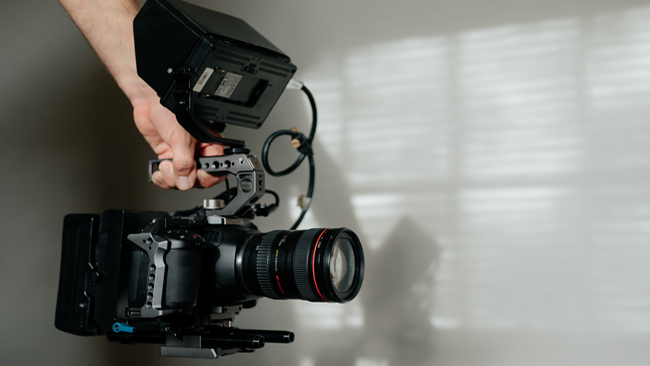COVID-19 is a worldwide epidemic that is causing churches to reassess their worship services and rethink their mission. Churches are started to contemplate transferring their physical services to online ones in order to keep their members safe from the virus.
Live streaming an internet sermon or church service may be a difficult endeavor, particularly in smaller churches that don’t have the resources or expertise to undertake such activity. It isn’t necessary, though. In this how-to guide, we’ll talk about how to livestream an event in a church and why it is worth doing it.
What is Live Video Streaming?
Live video streaming may be used for a variety of purposes. Consider sporting events, live stream concerts, or business meetings. There will be some individuals who can’t make it to the event, but everyone else will have a great time. A wonderful approach to increase attendance at your event is to have a live broadcast of the proceedings streamed. Live video streaming is all about this.
You’ll need a strong and steady internet connection in order to stream.
Live video streaming over the internet relies on a switcher and encoder together with cameras and audio. The output signal that is sent to a switcher includes the sound that was mixed by a sound mixer. It is possible for the encoding software to be separate from the camera, or it may be integrated inside the camera. In order to comply with streaming and video standards, it reduces the size of the video. H.264 is the industry standard for streaming.
Why Stream Video Online?
Young millennials (those between the ages of 14 and 25) started viewing more videos online through digital devices than they did on television in 2015. More than a third of Americans say they’d give up their cable subscriptions if they could watch all of their favorite shows and movies online in high definition.
According to Neil Patel, “Live video is the new currency of business.” With video marketing, 76.5 percent of small company owners get benefits. In 2020, 92% of advertisers used video in their company marketing strategy. In 2015, this figure was 78 percent.
Streaming live video may be quite profitable for many companies. The bulk of that increase is being driven by live streaming.
This year, over-the-top (OTT) streaming services, which frequently contain live video, are used by more than 64 million US homes. In 2020, OTT generated $106 billion in global revenue. There was a rise of $23 billion in 2025. Now that we’re back where we started, analysts project that by 2026, that figure will have grown to $210 billion.
Subscription-based models, like Netflix, are used to commercialize the majority of OTT content. Live video may also be monetized via advertising. Live video ad views climbed 113% year-over-year by the third quarter of 2015. They have continued to increase at an alarming rate ever since then. Why can’t churches use this popularity for their services?
Who Uses Online Streaming?
A wide range of over-the-top media and entertainment companies are now offering live streaming video services. Companies like DAZN, which used to film events from the stands, now have multibillion-dollar contracts with professional sports organizations.
YouTube has also been highly popular for the following reasons:
- Streaming Live Events;
- E-learning and education;
- Municipality and State;
- Worship Places: Churches;
- Live Music Streaming Events;
- Classes for Getting Fit;
- Live Sports Broadcasting;
- Radio and Television Stations.
It’s possible to reach a worldwide audience with the help of current technologies. As opposed to only a few years ago, live video streaming has never been this simple or economical. With the exception of language and time zones, anybody may watch live from any location in the globe.
How to Stream Video Online
Let’s look at 5 steps for streaming live video for the church.
Step 1: Plan your live broadcast and create objectives to keep focused. Identify your stream’s aim before proceeding.
Ask yourselves: What’s my goal? What message shall we share? What will our audience search for? How much can we spend?
With your responses to these questions, you may plan what you want to accomplish with your stream.
Step 2: Picking an Online Live Streaming Service
Next, you’ll need a way to live stream. “Online Video Platforms” is a common moniker for these services (OVPs).
Your chosen online video streaming provider will store your videos on a network of servers. It offers a strong network connection so users may watch videos swiftly and without latency.
Professional video hosting services provide business-ready live streaming solutions. These video hosting services offer the ability to broadcast from numerous cameras, stream in HD, and integrate live streams on your site or social media platforms.
Step 3: Purchase the Required Streaming Equipment
Few pieces of equipment are needed to stream video. Better equipment means better footage. Live streaming requires a camera, microphone, internet, and encoder. Smartphones and tablets may meet these needs at a rudimentary level. This kind of livestream might be low-quality. Higher-quality live feeds need better equipment like the best PTZ camera for church. Because of its capabilities to pan, tilt, and zoom, this kind of camera is referred to as a PTZ camera. PTZ cameras are perfect for online church services when the speaker moves about. You will also need a computer, more than one mike (lav, shotgun, and other professional mics will provide better audio quality) and your internet connection should be fast and reliable.
Step 4: Set Encoder Options
Encoders transform videos for live streaming. Encoder settings help you deliver the finest stream. Here are some settings:
Frame rate – How many times per second. Ideally, 30-60 fps.
Video frame size – Size in pixels. Full HD is 1080p or 1920×1080.
Video Bitrate – The amount of video data uploaded per second. 1000-8000 kbps is typical.
Step 5: Organize Your Work Process
Let’s imagine that you are going to livestream some church ceremony, a wedding, for example. Here is a procedure of how to livestream a wedding.
- Install cameras and microphones on site. Stability requires tripods.
- Encoding/mixing should be centralized. Install your PC in the center. Here, your engineer should manage the broadcast, switch camera angles, start visuals and animations, etc.
- Connect devices via wires. Test everything now that it’s on.
- Choose broadcast encoder parameters.
- Use encoder settings to link it to web video platform.
- You’re ready to start streaming.
Live streaming church services online helps engage your audiences. Our guide should help you live stream video online. Always remember that streaming video requires preparation. Before pressing record, make sure you’ve tried your stream several times.




Leave a comment
Have something to say about this article? Add your comment and start the discussion.